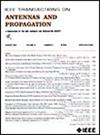基于变分的残差学习方法求解逆散射问题
IF 5.8
1区 计算机科学
Q1 ENGINEERING, ELECTRICAL & ELECTRONIC
引用次数: 0
摘要
基于学习的方法已广泛应用于求解电磁逆散射问题。在基于学习的感应电流反演中,通常从测量的散射场中提取感应电流的确定性部分,并将其作为神经网络的输入来预测总电流。然而,这种方法仅仅依赖于神经网络的函数逼近能力,限制了其泛化能力和精度。为了解决这些限制,本文提出了一种基于变化的残差学习(VBRL)方法。从确定性电流出发,由散射场的变化推导出变分电流。这个变分电流然后被用来更新确定电流,为神经网络提供一个精细的输入。为了减少网络的拟合负担,采用残差学习方案,只预测电流的残差部分。然后通过将预测的剩余电流与输入电流相加得到总感应电流。在我们的实现中,变分运算和残差学习都被封装在一个VBRL模块中,并且多个VBRL模块被级联以迭代地改进解决方案以获得更高的精度。数值结果表明,与现有的基于学习的方法相比,所提出的VBRL方法具有更高的精度和泛化能力,且反演时间相当。本文章由计算机程序翻译,如有差异,请以英文原文为准。
Variation-Based Residual Learning Method for Solving Inverse Scattering Problems
Learning-based methods have been widely applied to solve electromagnetic (EM) inverse scattering problems (ISPs). In learning-based induced current inversions, the deterministic part of the induced current is usually extracted from the measured scattered field and used as input to a neural network for predicting the total current. However, this approach relies solely on the neural network’s function approximation capability, which limits its generalization ability and accuracy. To address these limitations, this communication proposes a variation-based residual learning (VBRL) method. Starting with the deterministic current, a variational current is derived from the variation of the scattered field. This variational current is then used to update the deterministic current, providing a refined input for a neural network. To reduce the network’s fitting burden, a residual learning scheme is adopted, where only the residual part of the current is predicted. The total induced current is then obtained by summing the predicted residual current with the input current. In our implementation, both the variational operation and residual learning are encapsulated within a VBRL module, and multiple VBRL modules are cascaded to iteratively refine the solution for higher accuracy. Numerical results demonstrate that the proposed VBRL method achieves superior accuracy and generalization ability compared with existing learning-based approaches, with a comparable inversion time.
求助全文
通过发布文献求助,成功后即可免费获取论文全文。
去求助
来源期刊
CiteScore
10.40
自引率
28.10%
发文量
968
审稿时长
4.7 months
期刊介绍:
IEEE Transactions on Antennas and Propagation includes theoretical and experimental advances in antennas, including design and development, and in the propagation of electromagnetic waves, including scattering, diffraction, and interaction with continuous media; and applications pertaining to antennas and propagation, such as remote sensing, applied optics, and millimeter and submillimeter wave techniques

 求助内容:
求助内容: 应助结果提醒方式:
应助结果提醒方式:


